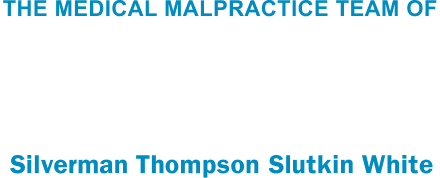Cerebral Palsy: Is Medical Negligence To Blame?
Recent statistics indicate that over 8000 infants each year are diagnosed with some degree of cerebral palsy following their birth. What was once thought to be an unfortunate complication of the birthing process, is now subjected to more scrutiny as leading experts agree that many instances of cerebral palsy could have been prevented by proper medical care during the labor and delivery process. Cerebral palsy is a complex medical condition that ranges in severity from mild to severe. Typically, those afflicted with cerebral palsy have an inability to control their motor function; i.e., they lack adequate muscle control and coordination. Common symptoms that can lead to a diagnosis of cerebral palsy include: involuntary movements of limbs; muscle spasticity (tightness), inability to walk properly (gait); seizures, breathing problems or difficulty swallowing; bladder and bowel continence issues; learning disabilities, and the impairment of one or more senses (sight, hearing, etc.). More severe cases may also result in a child having difficulty speaking. In addition, many children experience profound cognitive deficits and/or educational limitations attributable to the deprivation of oxygen that they experienced while in utero or during their delivery.
In many instances, cerebral palsy is preventable. Perhaps the greatest risk factor associated with cerebral palsy is a lack of oxygen flowing to the child (asphyxia) during the birthing process. This can occur if the umbilical cord becomes wrapped around the infant’s neck, or if the infant’s head becomes stuck during the delivery. In essence, when an infant is deprived of oxygen for a prolonged period of time, brain cells die, causing injury. Other less common risk factors for cerebral palsy include a viral or bacterial infection contracted by the mother; trauma to the infant’s head from an injury or alcohol and drug abuse. It is believed that 1/5 children who are diagnosed with cerebral palsy suffered a brain injury due to inadequate medical care during the labor and/or birthing process.
Sadly, there remains no cure for CP at this time. While there are numerous treatments and therapies that exist to try and improve a child’s quality of life, these programs often are financially and emotionally draining. In addition, the medical expense of caring for a child who has been diagnosed with cerebral palsy can run into the millions of dollars over the child’s lifetime and can be financially ruinous for parents. Accordingly, if you or a loved one has a child that suffers from CP and you believe the child may have sustained an injury at birth, you may be entitled to significant compensation to ensure that your child has access to the very best therapies out there for the rest of their lives. Such therapies that are often needed include medical surveillance by neurologists, pediatricians, pulmonologists, cardiologists, life care planners, orthopedic specialists, gastroenterologists and others. At STSW, our lawyers have extensive experience in handling cerebral palsy cases and will gladly sit down with you in a free consultation to discuss your potential case and the options that may be available to you






